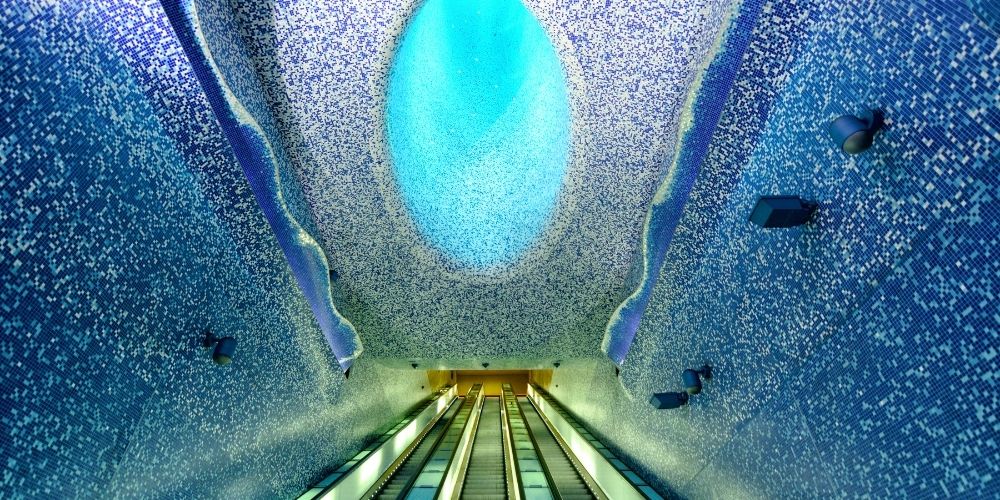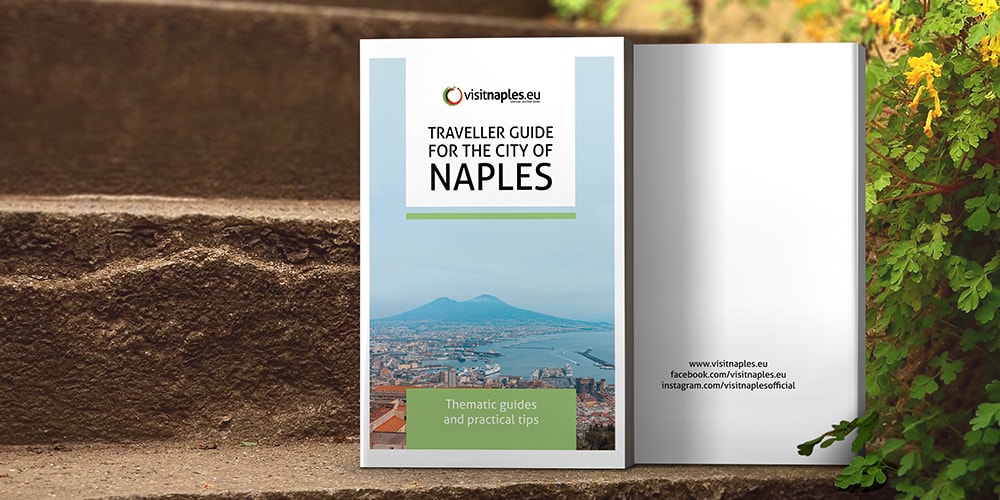Have you ever heard the Neapolitan saying Vir Napule e po' muore (namely, you can't die without first seeing Naples)? This proverb literally opens up a world. There are two explanations for this famous saying.
The first goes back to a legend that the most genuine Neapolitans carry in their hearts, based on the story of a witch who, with her magical powers, was able to break every spell. Raziella (in Italian, Graziella), this was her name, was a good woman who spent her magic at the service of people. At that time, those who suffered from love went to Naples to turn to her to erase their sorrows. With a special elixir with secret ingredients, she made those who had undergone her treatments forget all their suffering before leaving: a kind of death but then reborn.
The second story, probably more famous, is associated with Goethe who, in his renowned work Italian Journey, wrote: «I will not mention the location of the city and its often described and praised wonders. Here, people say: "You can't die without first seeing Naples!"».
Goethe visited many places on his journey, but it was in Naples that he left his heart. The warmth of the Neapolitans combined with the city's mild climate made him feel welcome and loved. It's not about the beautiful views, vistas or panoramas of Vesuvius; it's not about the monuments, historic buildings or picture-postcard squares: Naples is a vibrant city that releases emotions and feelings in every single corner. It has the ability to enter people's hearts and minds, with traditions and customs that surprise and impress anyone who comes here.
The Pope is in Rome, God is in Naples.Jean Cocteau
Naples artistic, historical and cultural heritage

Theatre of San Carlo ancient picture
Naples is often associated with symbols or icons of the traditional Neapolitan way of life: coffee, pizza and an endless list of unique gastronomic specialities. But that's not all. The city has ancient historical roots and has been the protagonist of memorable events. It would be impossible to recount its origins here in a few words. What is certain is that it has come into contact with the most diverse peoples and civilisations, absorbing the influences of other cultures like a sponge and assuming unique characteristics and connotations. As an essential sea town and port, it has played a strategic role economically and as a centre of cultural exchange and a breeding ground for the greatest intellectuals and thinkers of all time.
If we focused on music, cinema and the arts in general, a lifetime would not be enough to enumerate the great Neapolitan characters who have given their masterpieces to humanity. In the same vein, to mention every square, alley, monument, historic building, church - in short, the artistic heritage - would require a whole treatise. In 1995, the entire historic centre of Naples was inscribed on the UNESCO World Heritage list due to its priceless treasures.
I am leaving. I will not forget neither Via Toledo, nor all other districts of Naples; in my eyes this is, without any comparison, the most beautiful city in the universe.Arthur John Strutt
Primates and celebrations of the city of Naples in history

Toledo underground Station
Naples boasts records in the most diverse fields. In all likelihood, not even the most genuine Neapolitans know them all. Want to bet? Let's see them together, one by one, and put them to the test.
- 1224: the world's first public university, the Istituto Universitario Federico II, was founded and is still a source of pride for the city today
- 1732: the Orientale of Naples, the oldest University of sinological and oriental studies in Europe, was founded
- 1734: the Marinara, the first pizza in history, was born
- 1735: the first Chair of Astronomy in Italy was established in Naples
- 1737: San Carlo, Europe's first opera house still active, was founded
- 1751: the "Real Albergo dei Poveri" building started to accommodate and provide work for some eight thousand beggars. It was the largest structure of its kind in Europe in the 18th century
- 1754: the first chair of the Faculty of Economics in Europe was entrusted in Naples to Prof. Antonio Genovesi
- 1763: the "Cimitero delle 366 fosse" (the 366 pits cemetery), the first Italian cemetery for the poor, was created
- 1782: in Naples, the first anti-tubercular prophylaxis intervention in Italy
- 1792: the Atlas of the Two Sicilies was created, the world's first maritime atlas
- 1801: the world's first Mineralogical Museum was created
- 1806: the first fire brigade was born
- 1832: Ponte Real Ferdinando, the first iron suspension bridge in Italy over the Garigliano River, second in Europe after the Union Bridge over the Tweed River and third in the world after Jacob's Creek Bridge, Pennsylvania
- 1839: the first Italian railway was built, the famous Naples-Portici railway stretch
- 1840: Officine di Pietrarsa, Italy's first metalworking factory in terms of the number of workers, was founded
- 1841: the world's first Volcanological Observatory was founded
- 1845: Italy's first Meteorological Observatory was created
- 1851: Luigi Armingaud patented the first Italian washing machine
- 1860: record for the most populous city in Italy with 447,065 inhabitants compared to 204,715 in Turin and 194,587 in Rome)
- 1861: the first volcanological observatory was created, the oldest in the world, Osservatorio Vesuviano
- 1946: Enrico de Nicola, the first President in the history of the Italian Republic, is a Neapolitan citizen
- 1986-87: Naples is the first city in southern Italy to win the Italian Football League
- 1989: Naples became the first city in southern Italy to win a European trophy, the UEFA Champions League
- 1995: the Historic Centre of Naples, amidst the UNESCO World Heritage Sites, is the largest in Europe
- 2005: Bagnoli's 900-metre-long pier became European longest “scenic sea promenade”
- 2012: Toledo underground becomed one of the most beautiful stations in the world
- 2016: the first Apple Academy in Europe was founded
- 2016: a polyphonic choir made up of 13,000 music students performed in Piazza del Plebiscito
- 2017: UNESCO included the Art of the Neapolitan Pizzaiuolo in the intangible cultural heritage list of Humanity
- 2018: Naples won the record for the world's largest sfogliatella: 75 kg of deliciousness
...to be continued... How many of these records do you know?
Neapolis, which in Greek means new city, sums up all the essence of genuine reality. The city always has new surprises that continue to give us an atmosphere capable of welcoming its citizens and guests in a warm and brotherly embrace, like a mother with her children.










Lascia un commento